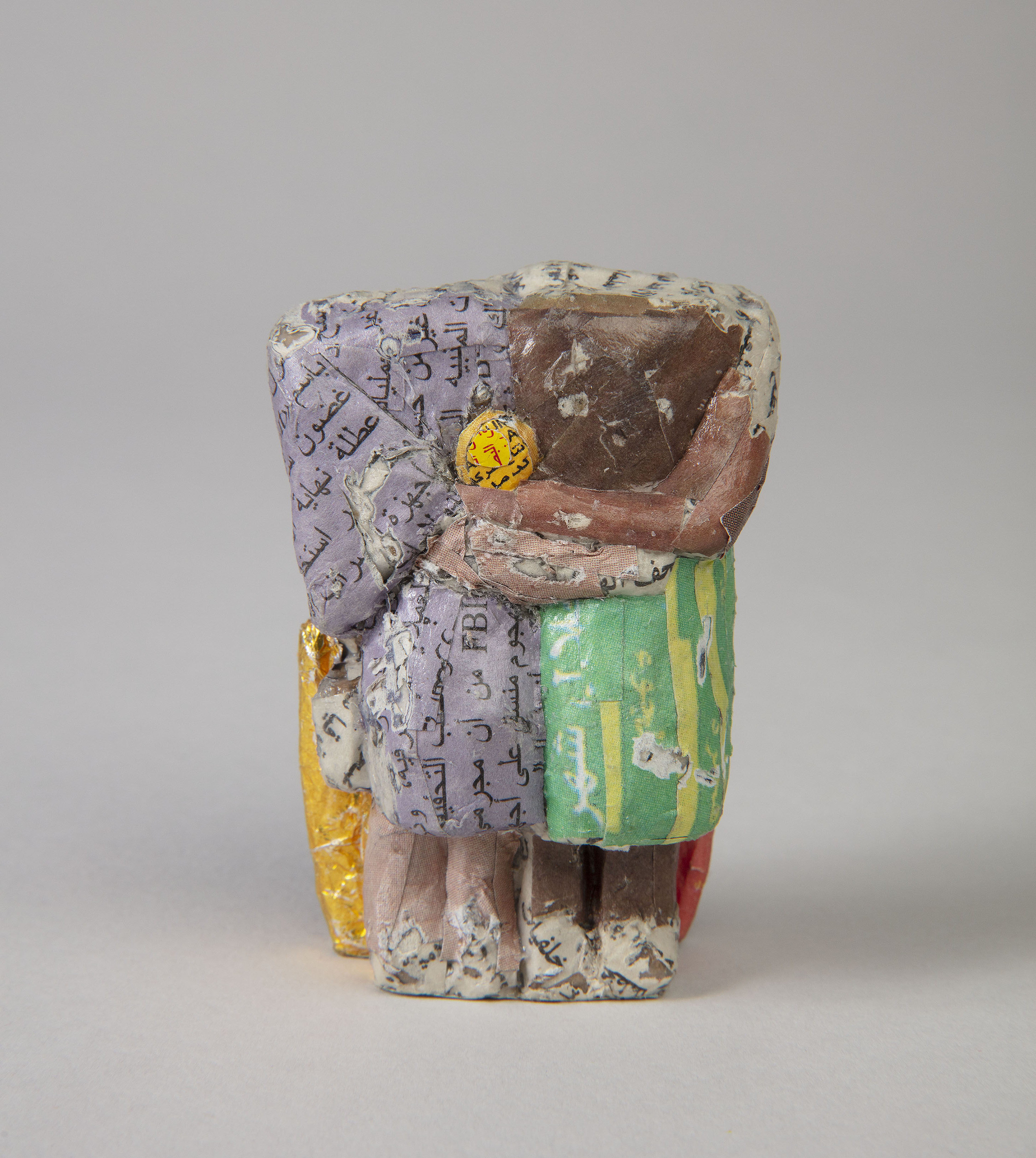BeLonging - the vitrine
 BeLonging: Michael Rakowitz and the Mesopotamian collection, installation view. Photo: Mikael Olsson.
BeLonging: Michael Rakowitz and the Mesopotamian collection, installation view. Photo: Mikael Olsson.
Place and Anchoring
Mesopotamia was among the first places where people began to settle, around 12 000 BC. The people living in the area spoke Sumerian and Akkadian and one of the earliest writing systems – cuneiform– was developed in the region (ca. 3500 BC). For the people in ancient Mesopotamia, an ideal world was considered to be unchanging. This meant that many core values and customs survived thousands of years, despite shifting state formations. When constructing new palaces or temples, inscribed objects would be placed in the walls or foundations of the buildings. The inscriptions would bless the new building and the ruler who commissioned it, thereby anchoring them, through prayers, to place and in history.
In the Medelhavsmuseet collection there is a selection of such inscribed objects that span a period of around two thousand years (ca. 2450–562 BC). They testify to the continuity of traditions and belief systems, and to a deeply anchored and shared Mesopotamian history. One of them, the blue stone tablet, is shown in this exhibition.
Identity and Movement
Like today, people in ancient Mesopotamia were on the move: trading, fleeing war, being displaced, or seeking better opportunities elsewhere. They created new contexts and cultural bonds and developed identities tied to the places in which they stayed, often while maintaining a connection to the place they left behind. They sent letters to that place or would leave an object, such as a statue in a temple, to represent them during their absence.
Trade and exchanges were noted in administrative documents and seals were used to mark identity, presence, or ownership. The seals were small and personal and were used to sign the documents. A witness would roll or stamp their seal on a clay tablet as identification and proof of presence. Seals were also used to close clay envelopes, doors, or bags.
Change and Longing
Throughout history, both people and objects have been moved from their original contexts. In modern times they have then been scattered across the world, the objects ending up in different museums and private collections. Some have disappeared in the art black market or been destroyed with religious or political motives.
When archaeological objects are exhibited in a new place and time – for example in a museum – their meaning changes. They are perceived as works of art, cultural heritage or educational material. The objects act as reminders of historical events and become colonial material, archaeological discoveries, or political pawns. As symbols of identity, survival and hope, they can express loss and longing for another time and place; another home.
Contemporary artist Michael Rakowitz touches upon the implications of displaced and changing cultural objects in his artwork series The invisible enemy should not exist (2007–ongoing). In the aftermath of the US-led invasion of Iraq in 2003, the National Museum of Iraq was looted and around 15 000 artifacts were stolen. The art-project is an ongoing commitment to recuperate 7 000+ objects which remain missing. The reconstructions are made from Middle Eastern food and local Arabic and Assyrian newspapers found in cities across the United States. They reference cooking as a symbol of survival, resistance and joy and allude to museum artifacts’ and refugees’ sometimes veiled origin. In this way, the ancient objects, as well as the people who made and cared for them, are given form in the reappearances imagined by the artist. Simultaneously, they function as placeholders for the lost Iraqi lives that did not receive as much public uproar as the lost artifacts. In 2011 Rakowitz began to similarly reappear missing and at-risk Syrian artifacts, in the project May the obdurate foe not be in good health. One sculpture from that series is shown here together with two pieces from The Invisible enemy should not exist-project.
 Installation view. Photo: Mikael Olsson.
Installation view. Photo: Mikael Olsson.






 Photos, from top left: Mikael Olsson (1-2), The National Museums of World Culture (3-6), Courtesy of the artist (7).
Photos, from top left: Mikael Olsson (1-2), The National Museums of World Culture (3-6), Courtesy of the artist (7).
Featured works in the vitrine:
Michael Rakowitz, The invisible enemy should not exist (2007-ongoing). 2 objects from cardboard, Middle Eastern packaging and newspapers, glue, museum labels. Courtesy of the artist.
Michael Rakowitz, May the obdurate foe not be in good health (2011-ongoing). 1 object from cardboard, Middle Eastern packaging and newspapers, glue, museum labels. Courtesy of the artist.
Featured Mesopotamian objects (loan from Medelhavsmuseet/Världskulturmuseerna):
MM 1956:106. Cylinder seal, rock crystal. The third Dynasty of Ur, c. 2100–2000 BC.
MM 1957:004. Cunieform tablet, lapis lazuli. Building inscription, Amar-Suen. The third Dynasty of Ur, c. 2046–2038 BC.
MM 1969:019. Cuneiform tablet, clay. Administration document, Umma. The third Dynasty of Ur, c. 2100–2000 BC.
MM 1970:033. Stamp seal, carnelian. Neo-Babylonian, Late 7th-5th centuries B.C.